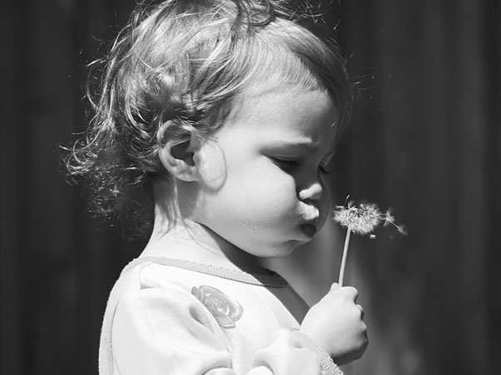The No Cry Discipline Solution (11 page)
Read The No Cry Discipline Solution Online
Authors: Elizabeth Pantley





40
The Foundation for No-Cry Discipline
Father-Speak
“ We have an old Irish saying that I use when one of my girls is
hollering or fussing: ‘You’ll be better before you’re married.’
It doesn’t offer much comfort to the child, of course, but
it does help the grown-ups! All these little trials will pass
and someday be forgotten. It’s a philosophy that puts the
end goal in perspective. The point is getting them safely and
sanely to adulthood.”
—Raymond, father to Elena, age 4, and Eva, age 2
behavior in a way that can allow you to gently discipline in the
context of the true meaning of the word: to teach and to lead.
The next time your child misbehaves by having a temper tan-
trum, hitting a friend, or yelling at you—instead of looking at
him and thinking
What a brat!
, you can instead think,
Whoa.
This child is seriously lacking emotional control.
You can step back, calm down, and understand that it’s not a lack of parenting skills
and it’s not a defect in your child’s personality, it’s just ordinary
human growth.
The Most Important Concept to Remember
Your child doesn’t whine, fuss, and have temper tantrums because
she is trying to manipulate you. She isn’t purposely being “bad.”
She doesn’t misbehave just to make you angry. Your child’s mis-
behaviors are a direct result of the fact that she cannot control
her emotions. This is biologically, psychologically, and absolutely
normal.
Discipline and Emotional Control
41
Key Point
\A child is emotion in motion—untamed emotion in constant
motion. Only with maturity and experience will a child
develop the tools that bring emotional control.
If you can keep this one vital fact in the forefront of your mind,
I guarantee that the next eighteen or so years will be much happier
and immeasurably more peaceful for you. It will also give you the
presence of mind to help your child learn how to develop appropri-
ate emotional control.

Discipline is a very complicated and complex matter. We want
to enjoy our children, we don’t want to stress about the little
things, and we want to be forgiving to our children and ourselves.
However, there are many, many things we must get our children
to do or stop from doing. There are lots of daily tasks that must be
completed. And children don’t always listen, they don’t always do
the things we want them to do, and they have a limited amount
of knowledge and emotional control. As I see it, there are four
distinct parts to the purpose and goal of discipline.
1. To correct immediate behavior
2. To teach a lesson
3. To give tools that build self-discipline and emotional control
4. To build the parent/child relationship
Let’s examine how these parts apply to a few typical situations
so that you can begin to understand how these four purposes color
almost every discipline situation with your child.
Situation: Your child is having a temper tantrum in a store because
you won’t buy a new toy.
1.
Correct immediate behavior.
Take your child to a restroom
or unpopulated corner of the store. Wait for your child to
stop the tantrum.
2.
Teach a lesson.
You can’t have everything you want. You
need to express your emotions appropriately.
42
Copyright © 2007 by Better Beginnings, Inc. Click here for terms of use.
The Four Parts to Discipline
43
3.
Give tools to build self-discipline and emotional control.
Help your child write a list of toys that she wants but can’t
have right now.
4.
Build the relationship.
Demonstrate leadership, understand-
ing, and patience.
Situation: Your two children are squabbling over a toy.
1.
Correct immediate behavior.
Put the toy on the counter
while you get your children to stop tussling and pay atten-
tion to you.
2.
Teach a lesson.
Children need to learn how to share toys
and take turns.
3.
Give tools to build self-discipline and emotional control.
Help children by setting a timer so each can have a fi ve-
minute turn playing with the toy. Show them how to do this
in the future without your help.
4.
Build the relationship.
Show them how to play together and
how to settle disputes. Show them that they can look to you
for help in handling problems.
Situation: Your child is upset with a playmate and bites her on the
arm.
1.
Correct immediate behavior.
Separate the children. Provide
attention and care to the child who was bitten.
2.
Teach a lesson.
Get down to your child’s level, put your
hands on her shoulders, look her in the eye, and say, “Biting
hurts. We don’t bite. Offer Emmy a hug. That might make
her feel better.”
3.
Give tools to build self-discipline and emotional control.
Give your child a few hints on how she should handle her
frustration next time. “If you want a toy, you can ask nicely
for it or you can come to Mommy for help.”

44
The Foundation for No-Cry Discipline
4.
Build the relationship.
Show your child that you are on
her side even when she makes mistakes. Demonstrate that
she can count on you to teach her how to handle strong
emotions.
Discipline Is Not a One-Time Maneuver
You say you’ve tried to get your little one to put his toys away, but
he never does. You’re after your daughter constantly not to whine,
yet that screechy voice continues. You repeatedly attempt to get
your two children to share their toys
nicely
, yet it seems that daily you’re refereeing an argument. No matter what you do, the same
issues keep coming up over and over again.
Arianna, age 2


